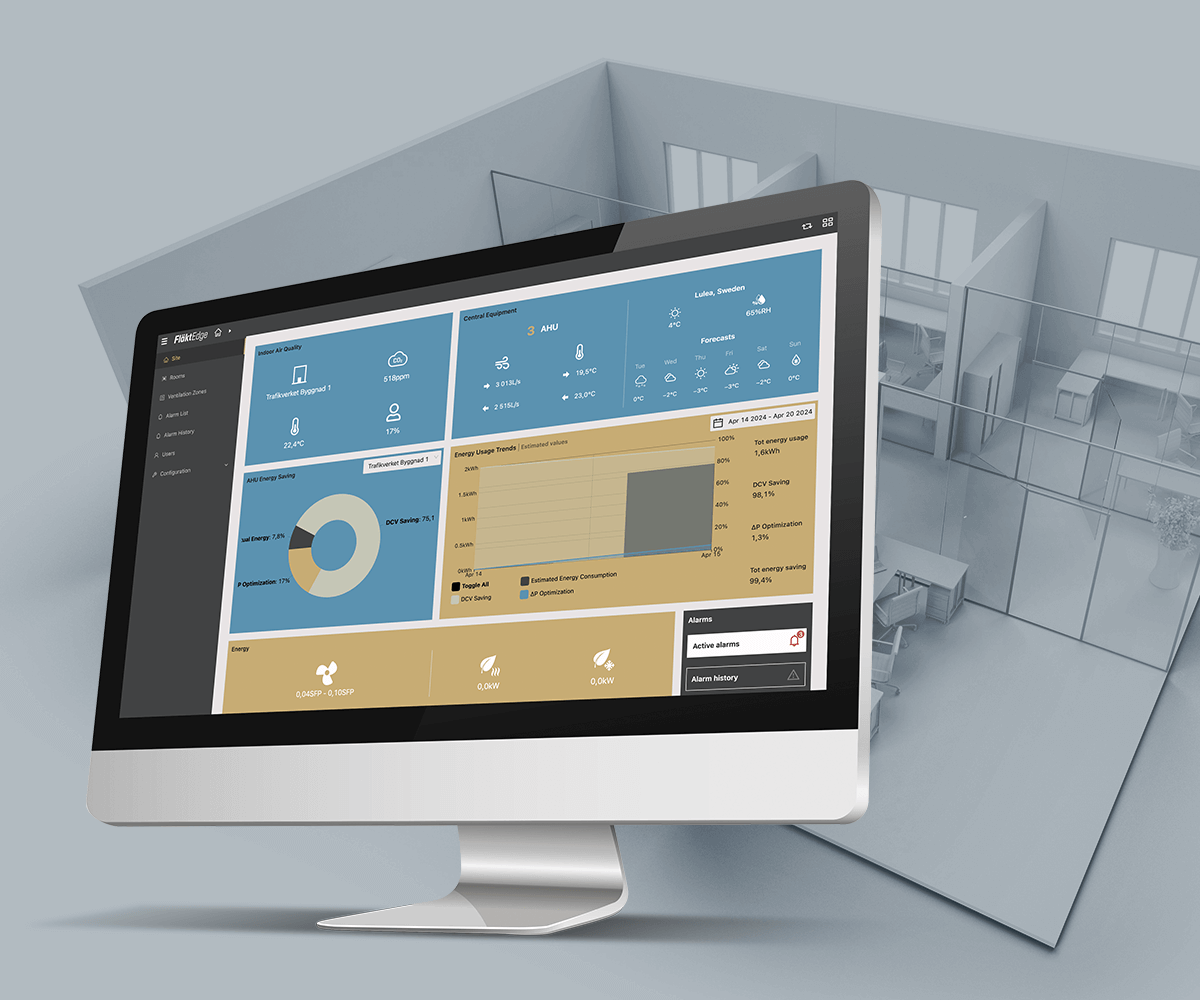With climate change and stricter energy-saving directives such as the EPBD, ventilation system designs are increasingly shifting from traditional Constant Air Volume (CAV) systems to Variable Air Volume (VAV) and Demand-Controlled Ventilation (DCV) systems.
While Variable Air Volume (VAV) systems offer significant energy-saving potential, certain challenges can discourage designers and investors from choosing them. Two of the most frequently cited concerns are:
- Higher Initial Investment
- Increased Design Complexity
Initial investment cost of a VAV system could be 20-30% higher than a CAV system. However, this additional investment is typically offset by lower operational costs over time. The payback period could typically be between 4-10 years depending on several factors such as building applications, design complexity, energy cost, etc [4].
These higher costs are primarily due to:
- Additional system components
- Advanced control systems
- Zoning requirements
Implementing supply VAV zoning can increase the number of components required in the extract ductwork to maintain proper ventilation balance (Supply airflow = extract airflow). Since airflow setpoints in each supply zone can change dynamically based on demand, the most straightforward way to maintain balance is to assign a dedicated extract VAV damper to each corresponding supply zone.

If the building application allows, extracts could be centralized in corridors. This will reduce the initial investments in extract VAVs and ductwork and simplify the design.

However, modern complex building layouts can make ventilation balancing difficult—or even impossible—without a sophisticated Building Automation and Control System (BACS). This is especially true in cases where a ventilation zone includes multiple supply and/or extract branches, or where physical barriers such as walls divide the supply area into smaller subzones, as illustrated in the example below.

Balancing ventilation systems in complex building designs can be time-consuming and costly. Designers and installers often face challenges with commissioning speed, system flexibility, and integration with building controls.
That’s where a smart solution makes all the difference.
FläktEdge: The Smart Solution for ventilation balancing
FläktEdge offers a powerful solution for ventilation balancing in complex designs:
- Simplified design through centralized extract air VAVs
- Preconfigured FläktGroup VAV components for up to 10x faster commissioning compared to other BACS
- Cloud access and alarm management
- Flexibility to adapt to future layout changes
Ventilation balancing is a standard module in all FläktEdge tiers. Whether you're using FläktEdge as a mini-BMS or integrating it with a third-party BMS, you can leverage its capabilities to streamline your ventilation design and reduce commissioning time.

Sign up for our FläktEdge demo now by using the form below.
- https://hsph.harvard.edu/news/post-pandemic-an-increasing-focus-on-indoor-air-quality/
- https://www.iea.org/energy-system/buildings
- Energy Information Administration (EIA) - Commercial Buildings Energy Consumption Survey (CBECS), Environmental Protection Agency (EPA), ASHRAE
- ılmaz, T. (2006). Life-cycle cost analysis for constant-air-volume and variable-air-volume air-conditioning systems. Applied Energy.
DOI: 10.1016/j.apenergy.2005.06.002
